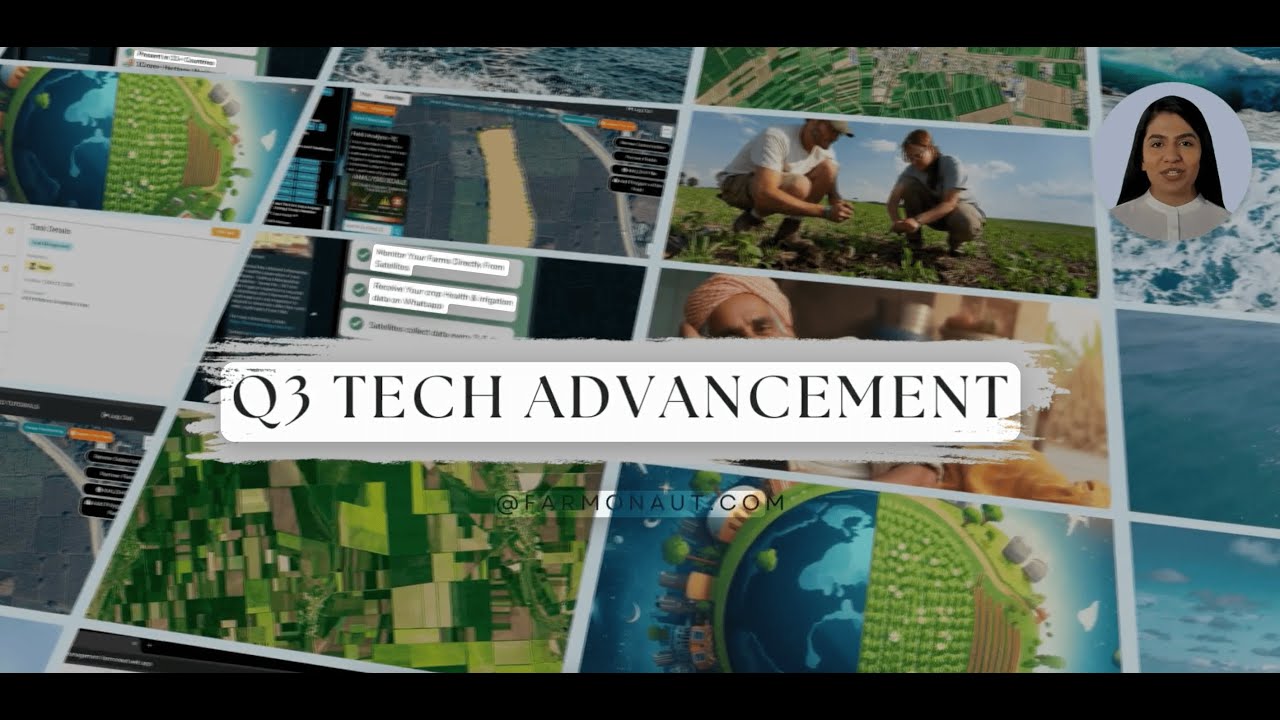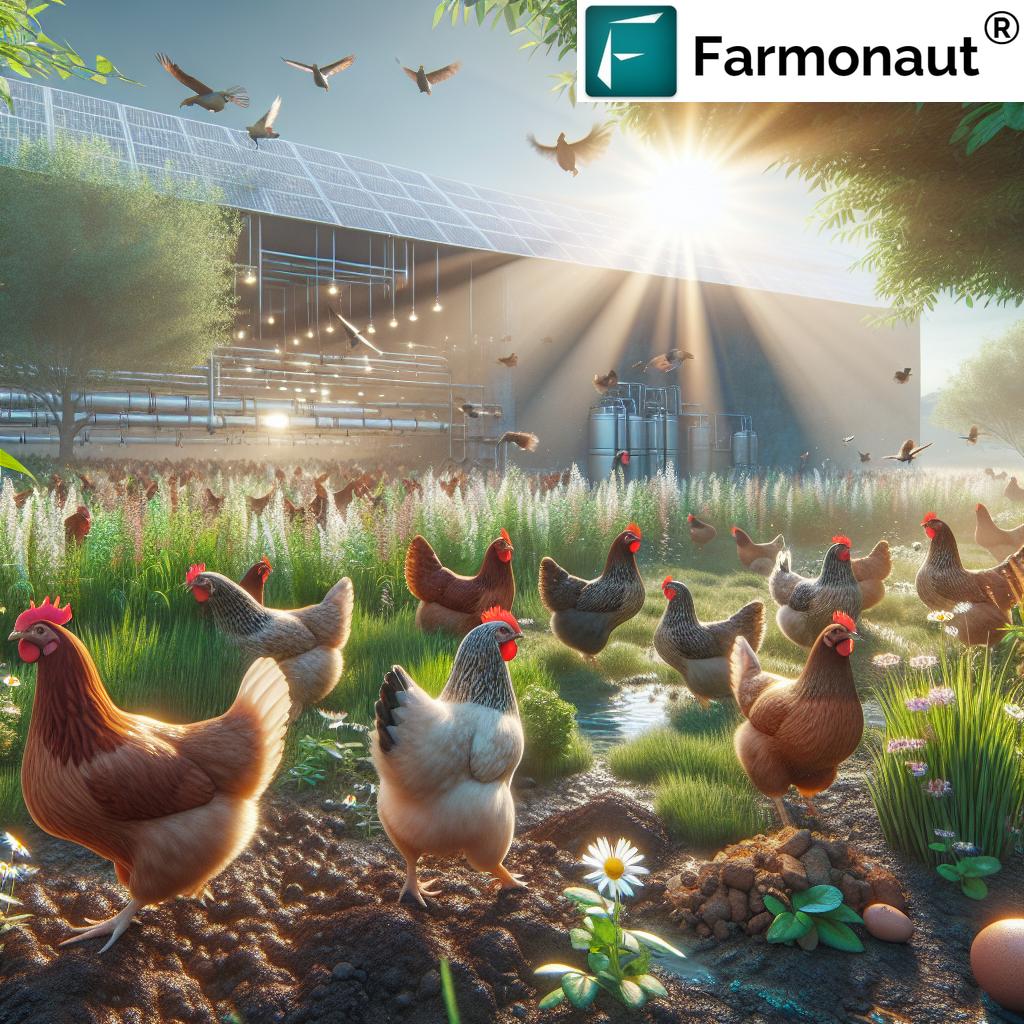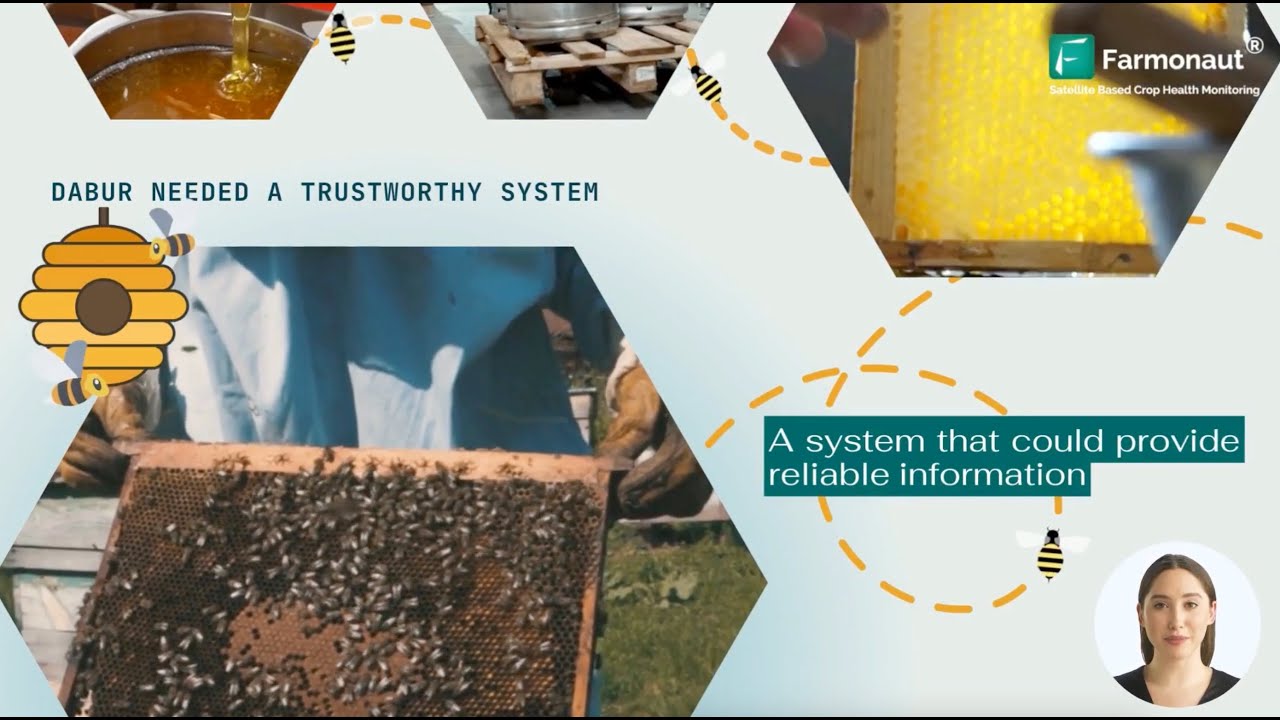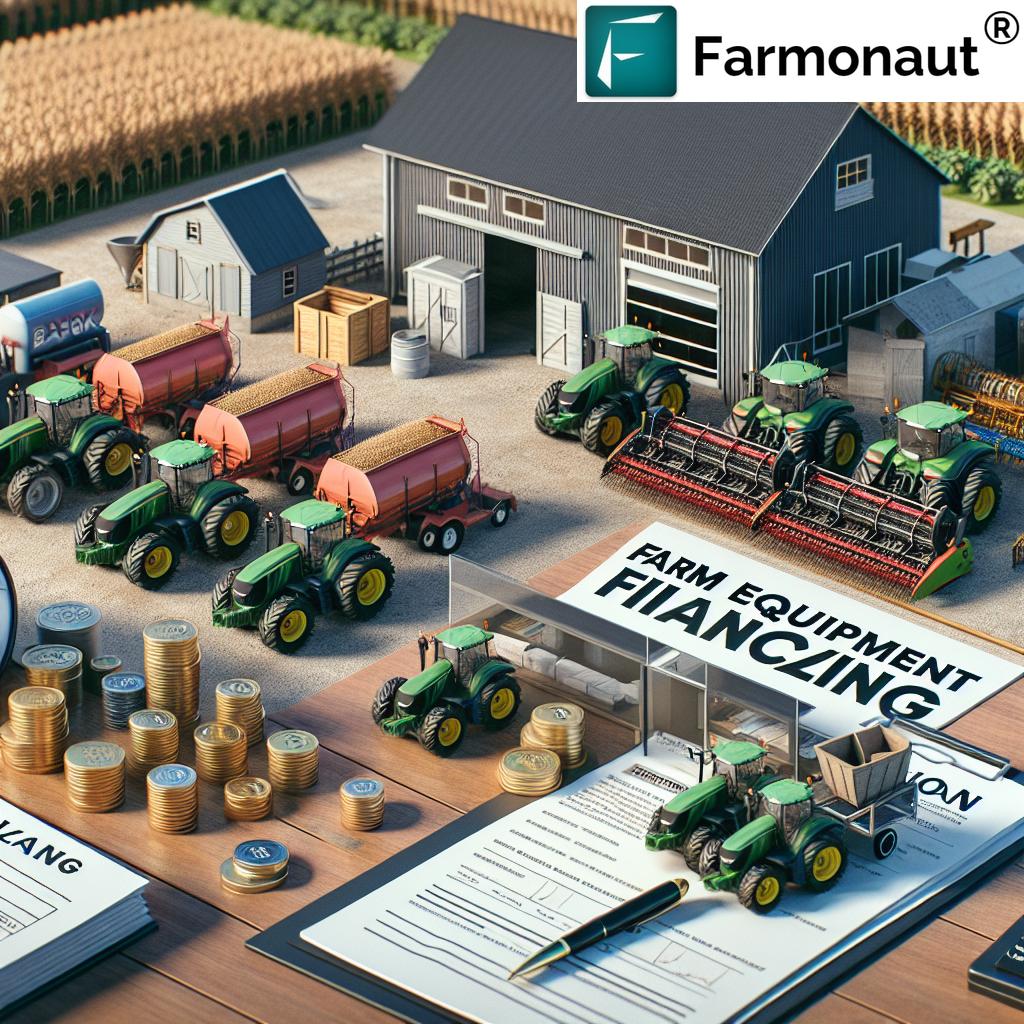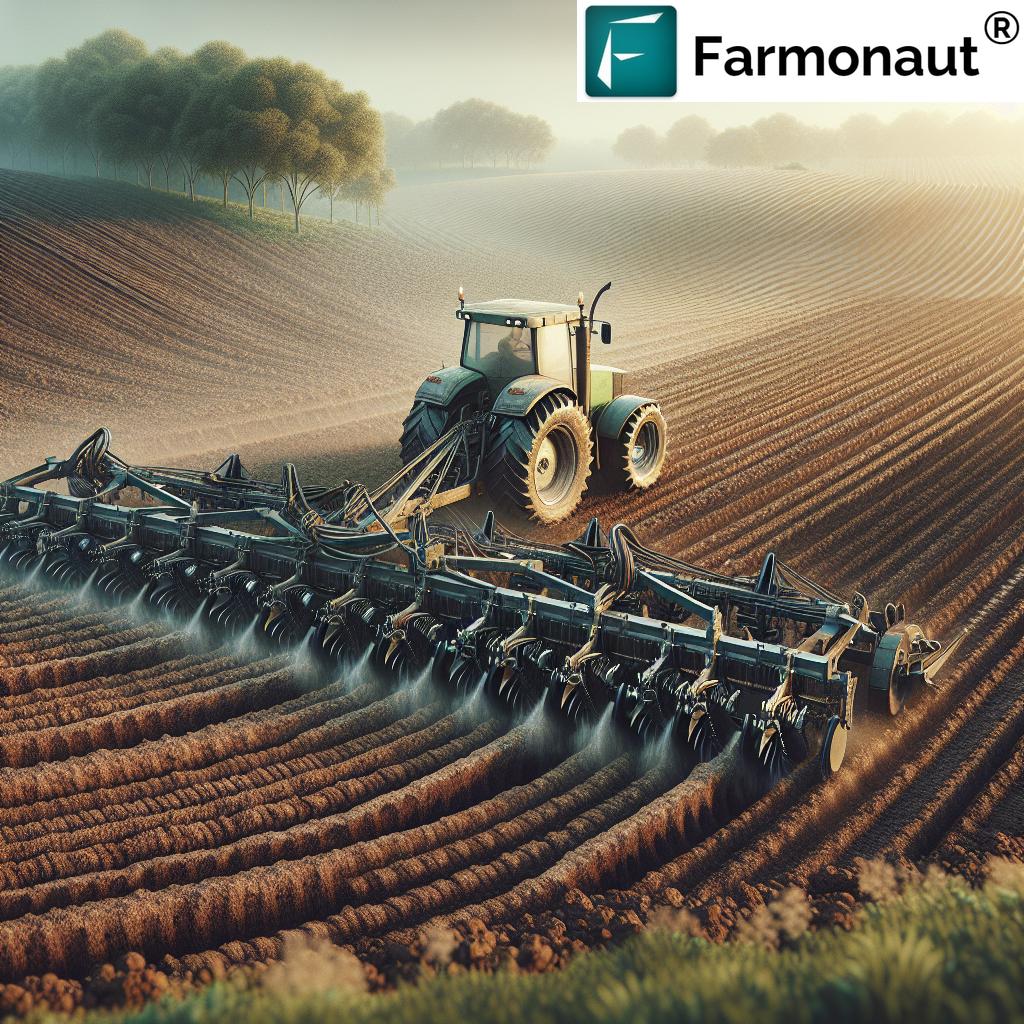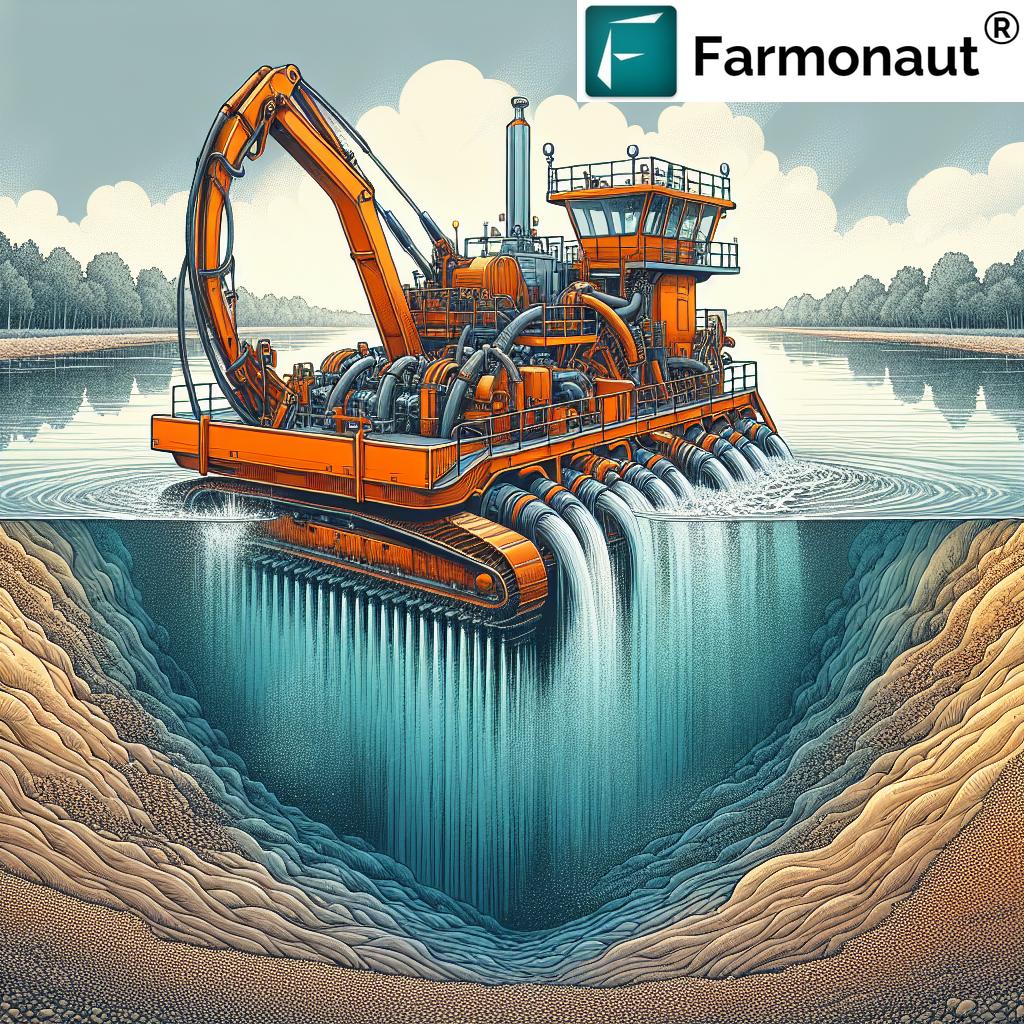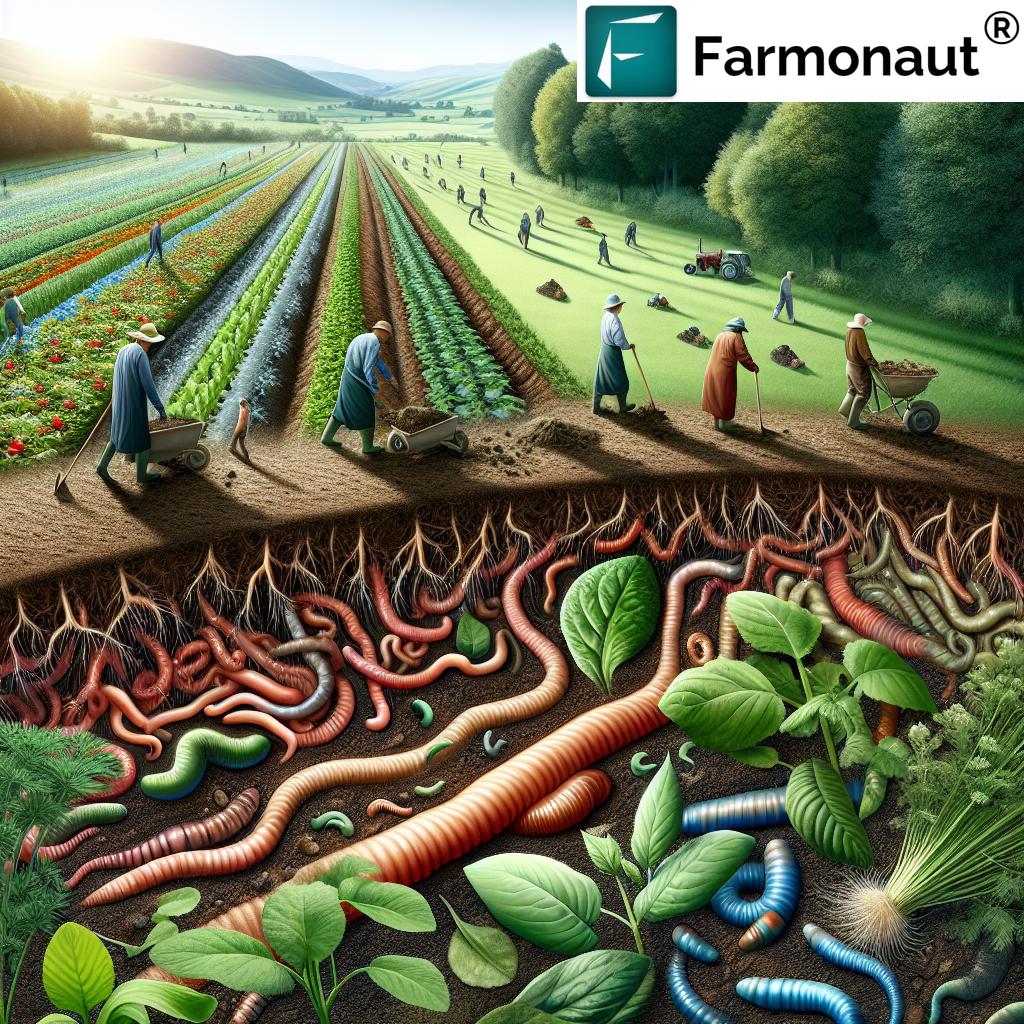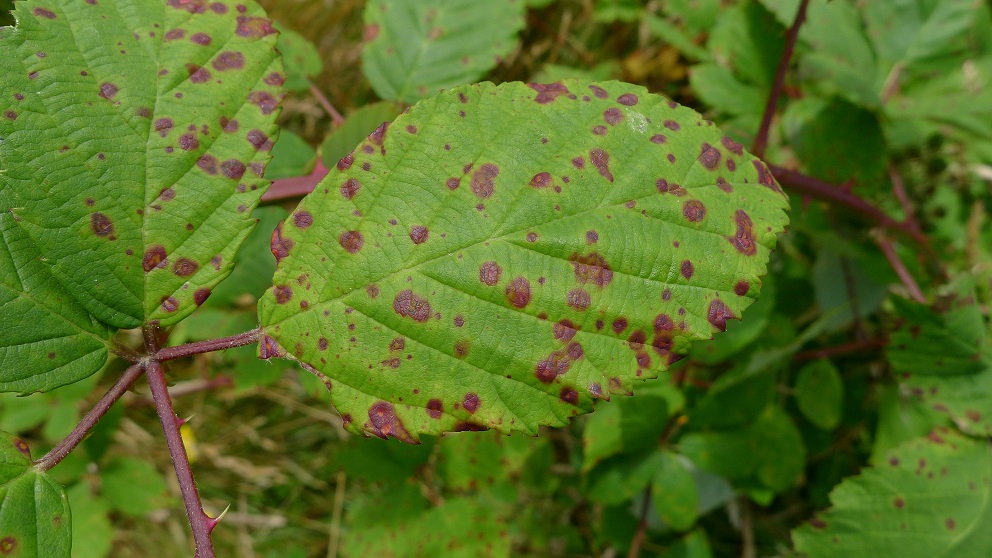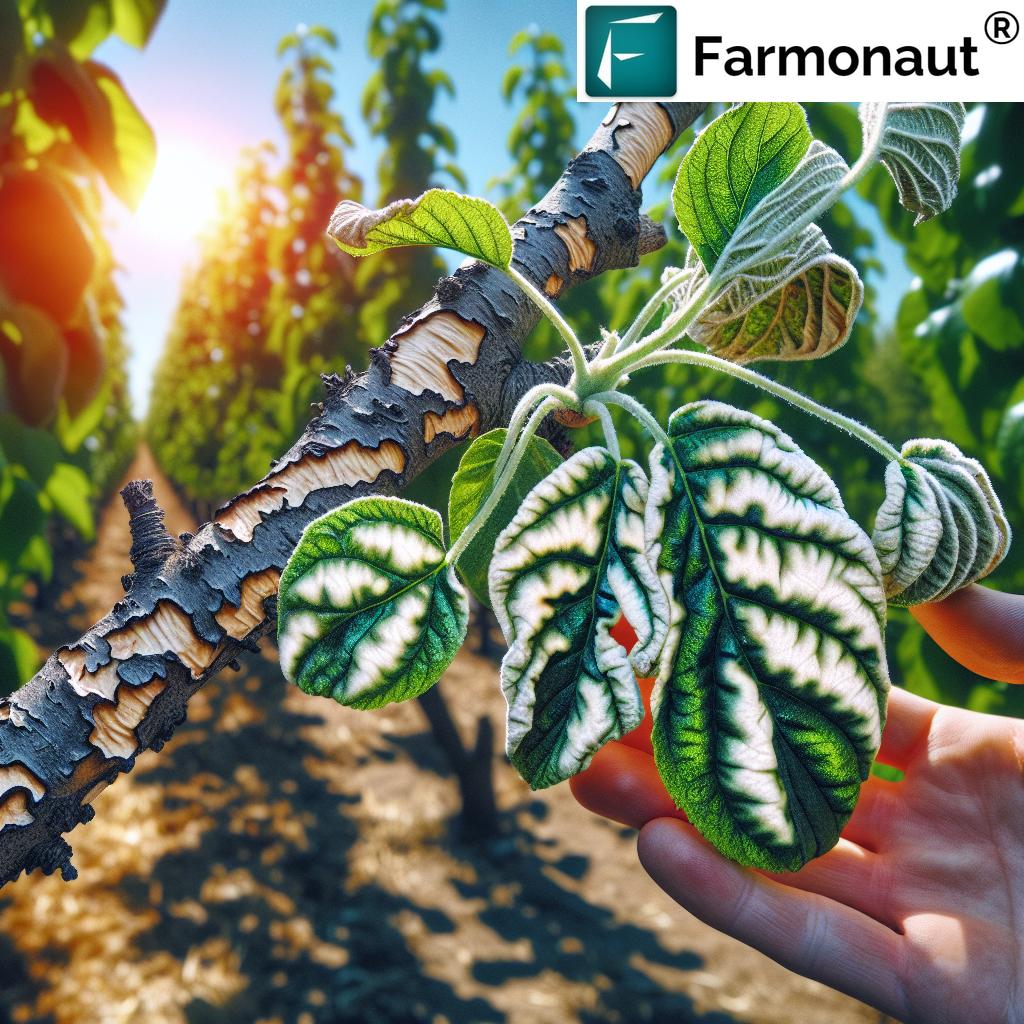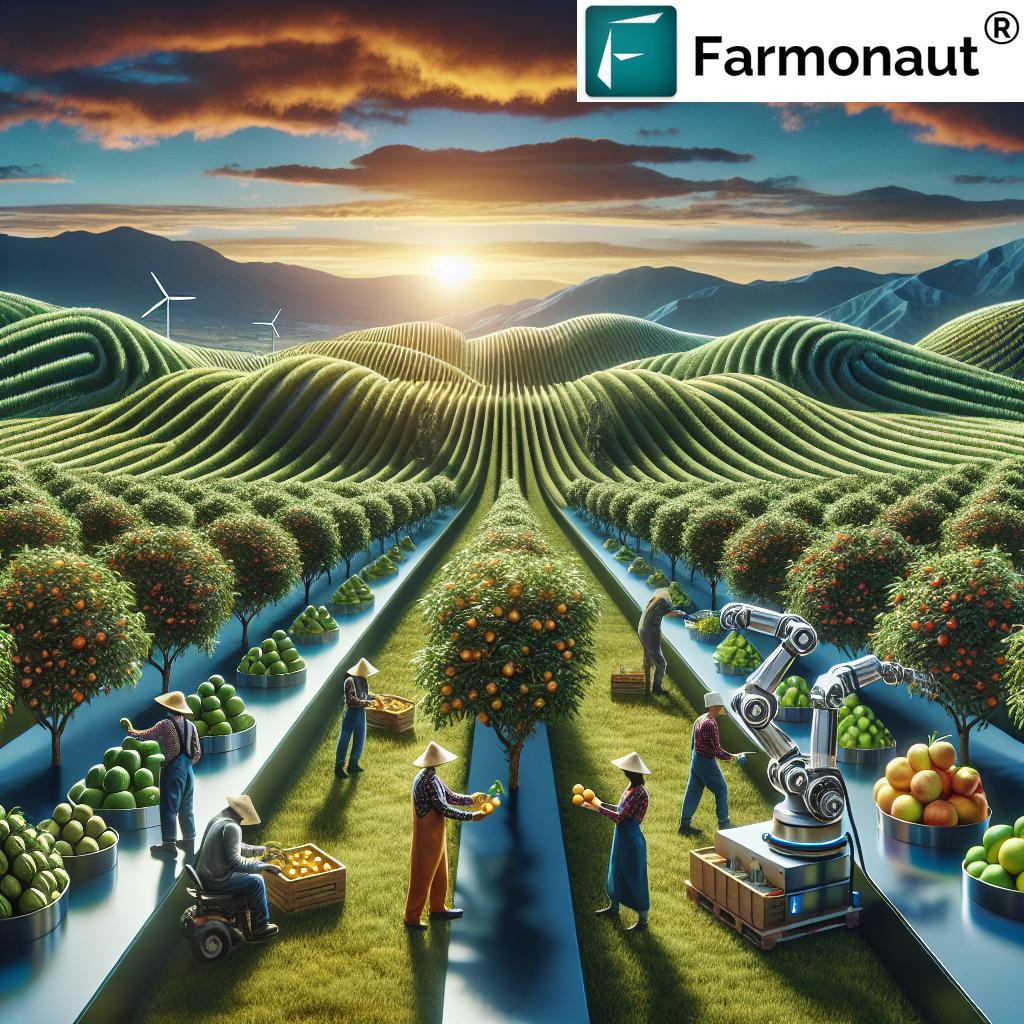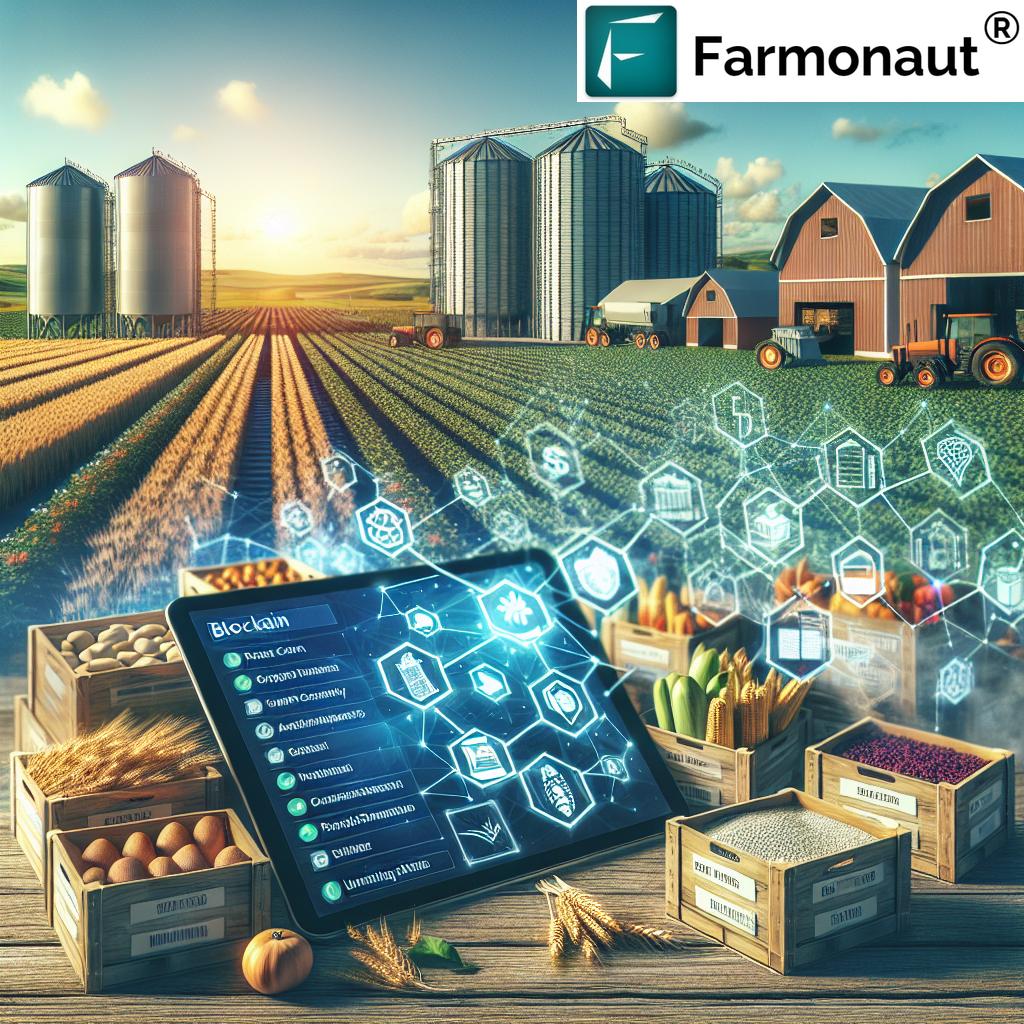Sustainable Farming Practices: Free-Range Eggs Benefits
- Summary: Sustainable Farming Practices in Free-Range Egg Production
- Introduction to Sustainable Egg Production
- Understanding Free-Range Egg Production
- Environmental Benefits of Free-Range Egg Farming
- Animal Welfare in Free-Range Egg Production
- Economic Implications of Sustainable Egg Systems
- Top Sustainable Practices in Free-Range Egg Production
- Innovative Technologies for Sustainable Poultry Management
- Comparative Benefits Table: Free-Range vs. Cage-Free vs. Conventional Eggs
- Challenges & Considerations in Free-Range Egg Farming
- How Farmonaut Supports Sustainable Egg Production
- Frequently Asked Questions
- Conclusion: Towards a More Sustainable Egg Industry
Summary: Sustainable Farming Practices in Free-Range Egg Production
Sustainable egg production is revolutionizing the poultry sector by integrating animal welfare, ecological benefits, and innovative management systems. Through free-range egg farming, producers are adopting environmentally friendly and ethical approaches that enhance the quality of eggs, optimize soil fertility, and minimize environmental impact. This blog explores the multifaceted advantages, best practices, technological innovations, and economic implications of sustainable egg farming, with a specific focus on how Farmonaut empowers producers and stakeholders with data-driven, precision solutions for a healthier, more resilient food system.
Introduction to Sustainable Egg Production
The shift towards sustainable agricultural practices is driven by urgent environmental needs and growing consumer demands for ethical, nutritious food. Within poultry, free-range egg production stands out for its commitment to balancing the welfare of hens, soil health, and economic viability through integrated ecological principles.
Modern consumers are increasingly conscious of the environmental impact of egg production. Concerns over biodiversity loss, reliance on chemical fertilizers, water pollution, and greenhouse gas emissions are prompting a reevaluation of conventional, caged systems. Free-range egg farming offers a strategic alternative, prioritizing animal welfare in poultry farming while embracing ecological benefits that extend from the field to the final consumer.
Understanding Free-Range Egg Production
At its core, free-range egg production allows hens to roam outdoors, engaging in natural behaviors such as foraging, dust bathing, and social interactions. This system contrasts sharply with conventional caged environments, where poultry is confined to small, crowded spaces—limiting their ability to express instinctual activities.
The definition of “free-range” varies by region. In the United States, for example, it indicates that poultry has outdoor access for over half their lives. However, the size and quality of the outdoor area are not always specified. This leeway makes regulatory compliance and transparent labelling important considerations for both producers and consumers.
- Natural Setting: Hens are not limited to cages or restricted barns—they explore, forage in grass, peck at insects, and interact freely.
- Enrichment Enhancements: Free-range systems often incorporate shaded areas, vegetation, sand baths, and varied terrains to simulate diverse ecosystems.
- Improved Welfare: The ability to perform dust bathing helps reduce parasites and stress, boosting the overall health of the flock.
These advantages of free-range hens extend not only to welfare but also to nutrient profiles—studies suggest free-range eggs often have higher omega-3, vitamin D, and nutrient density than conventional eggs.
Environmental Benefits of Free-Range Egg Farming
Sustainable egg production through free-range systems is recognized for its positive environmental footprint and broad ecological benefits. Here’s how such practices foster a healthier environment:
Soil Fertility Enhancement from Chicken Manure
Hens naturally fertilize soil through their droppings, enriching nutrients, boosting microbe populations, and improving plant growth. This organic manure process helps to:
- Reduce chemical fertilizer use—lowering the risk of water pollution and greenhouse gas emissions.
- Support the microbial balance—which is vital for healthy soil, nutrient cycling, and plant resilience.
- Decrease synthetic inputs—creating safer, more sustainable food systems.
Promotion of Biodiversity & Healthy Ecosystems
Free-range hens, by foraging on insects and varied plants, naturally support a diverse ecosystem. Compared to monocultures or heavily confined poultry setups, these farms:
- Encourage the proliferation of beneficial insects and native vegetation.
- Reduce the spread of pests and diseases through increased ecological balance.
- Promote biodiversity—from soil microbes to pollinators—ensuring ecosystem resilience.
Decreases in Greenhouse Gas & Carbon Emissions
By utilizing natural fertilization and optimizing land use, free-range systems can reduce greenhouse gas emissions by up to 30% compared to conventional egg production. Key drivers include:
- Lower reliance on energy-intensive synthetic fertilizers and pesticides.
- Reduced carbon footprint in poultry farms due to less need for processed feeds and external inputs.
- Enhanced organic matter sequestration, locking carbon into the soil for long-term sustainability.
Reduction of Water Use and Pollution
Sustainable egg farming emphasizes efficient water management—from rainwater harvesting to recycling systems. The result is:
- Reduced water waste per kilogram of eggs produced.
- Lower risk of runoff into local waterways, reducing potential pollution and contamination.
Farmonaut’s Carbon Footprinting platform helps track and reduce on-farm emissions. These real-time insights guide egg and poultry farmers towards more eco-friendly decisions that reduce the carbon intensity per dozen eggs.
Animal Welfare in Free-Range Egg Production
One of the strongest arguments for sustainable egg production is improved animal welfare in poultry farming. Free-range hens experience:
- Lower stocking densities and greater freedom of movement.
- Access to sunlight and fresh air, which boosts calcium uptake (stronger eggshells) and general health.
- Outlets for instinctual activities—foraging, dust bathing, and socializing—all essential for psychological well-being and physical fitness.
Healthier living conditions mean fewer outbreaks of pathogens. The reduction in stress and crowding translates into decreased reliance on antibiotics and improved egg quality.
Real-time flock analytics and data monitoring (offered via Farmonaut farm management platforms) optimize conditions for living hens—alerting producers to welfare concerns, supporting proactive veterinary care, and promoting transparency.
Economic Implications of Sustainable Egg Systems
Transitioning to sustainable farming practices in egg production does present increased initial investment in infrastructure (outdoor runs, single-level housing, predator management). But the economic story does not end there:
- Premium Pricing & Market Demand: Eggs produced with high animal welfare and sustainability standards can command higher prices per dozen. In many markets, demand for organic and free-range eggs is growing—driven by educated consumers seeking ethical foods.
- Consumer Trust & Differentiation: Transparent labeling, traceability, and demonstrable welfare standards help producers differentiate in competitive retail and foodservice channels. Using Farmonaut’s Blockchain-Based Traceability tools enables secure proof of humane, sustainable practices from farm to consumer.
- Lower Disease Costs: Improved living conditions and lower disease incidence can minimize veterinary and culling costs over time.
Balancing costs, market advantages, and long-term ecological viability is at the heart of what makes sustainable egg production a promising sector for forward-thinking poultry farmers.
Top Sustainable Practices in Free-Range Egg Production
Embracing specific sustainable farming practices is crucial for egg producers aiming to enhance animal welfare, soil health, and environmental outcomes:
-
Integrated Pest Management in Egg Production
- Relies on natural predators (like birds and beneficial insects) rather than chemical pesticides to reduce pest pressure.
- Promotes biodiversity and a balanced ecosystem, making the production system more resilient.
- Farmonaut’s platform uses remote sensing data for informed pest detection and management, improving outcomes and reducing reliance on chemicals.
-
Water Conservation & Management
- Adopts rainwater harvesting, efficient drinker systems, and water recycling to reduce water usage and protect local resources.
- Limits wastage and ensures supply for both animals and crops.
- On-farm water analytics – like those available through Farmonaut – offer accurate monitoring to optimize usage and reduce costs.
-
Manure Composting
- Turning chicken manure into compost minimizes environmental risks associated with waste runoff.
- Composted manure provides nutrients for on-farm crops or local sale, enhancing sustainability and circular farming systems.
- Improves soil structure and fertility, supporting future egg and crop productivity.
-
Pasture Rotation
- Regularly moving hens to new grazing areas prevents overgrazing and allows soil recovery.
- Leads to reduced parasite load, higher soil fertility, and healthier pasture plants.
- Reduces disease risk and promotes long-term land sustainability.
-
Sustainable Feed Options
- Utilizing locally sourced and organic feed decreases the carbon footprint of poultry farms by minimizing long-distance transport.
- Supports local agriculture, reduces input costs, and protects the planet.
- Allows for greater flexibility and resilience in the face of feed price volatility.
For farms ready to scale their monitoring and sustainability efforts, Farmonaut’s Large-Scale Farm Management Suite gives agribusinesses a comprehensive view of production, environment, and resource use—all via an accessible, cloud-based dashboard.
Innovative Technologies for Sustainable Poultry Management
Integrating technology into free-range egg production brings sustainability and efficiency to a new level. Some of the latest advancements include:
- Automated Systems: Adoption of automated feeding, watering, and egg collection systems reduces labor costs, ensures consistent animal care, and prevents resource waste.
-
Farm Data Analytics: Real-time analytics on hen health, production trends, and environmental conditions enable agile decision making.
We at Farmonaut provide AI-driven advisory and customized farm dashboards—offering tailored insights to producers based on satellite imagery and on-farm data. -
Resource Management & Renewable Energy:
Installing solar panels, wind turbines, and efficient heating systems helps reduce non-renewable energy use, minimizing environmental impact and operational costs.- Our Fleet and Resource Management tools empower poultry operations to optimize energy and resource allocation, streamline logistics, and save costs across their supply chain.
-
Blockchain-Based Traceability:
Ensuring transparency of practices from farm to table builds consumer trust and helps producers demonstrate compliance with global sustainability trends.
Learn more about Farmonaut traceability solutions →
By leveraging satellite monitoring and machine learning, producers minimize risk, improve flock health, and achieve better sustainable outcomes with less manual labor.
Comparative Benefits Table: Free-Range, Cage-Free, and Conventional Eggs
| Egg Production Method | Animal Welfare Score (est.) | Carbon Footprint (kg CO₂/dozen, est.) | Biodiversity Impact | Antibiotic Usage | Nutritional Quality (Omega-3, est.) |
|---|---|---|---|---|---|
| Free-Range | 9/10: Outdoor access, low densities, high welfare | 1.2–2.0 | Promotes diverse flora/fauna; healthy ecosystems | Low; natural disease prevention | 15–20% higher than conventional |
| Cage-Free | 7/10: Improved movement, but confined indoors | 1.7–2.5 | Moderate; some habitat enrichment | Medium; moderate disease risk | 10–15% higher than conventional |
| Conventional Caged | 4/10: Restricted spaces, limited welfare | 2.3–3.0 | Negative to neutral; limited environmental interaction | High; preventive and remedial antibiotics | Baseline |
Estimates based on multiple international studies. Animal welfare score reflects space, access, enrichment, and stress levels. Nutritional quality is especially notable in free-range egg production, correlating with improved forage and sunlight exposure.
Challenges & Considerations in Free-Range Egg Farming
While the benefits of sustainable egg production are extensive, there are challenges and catch-all considerations that should guide decisions and management strategies:
- Predation Risks: Outdoor access exposes hens to predators such as foxes, hawks, and wild animals—effective fencing and vigilant monitoring are essential.
- Disease Management: While sustainably managed systems are often healthier, access to soil and wild birds introduces new pathogens. Regular health checks, vaccinations, and biosecurity protocols prevent outbreaks.
- Pasture and Soil Management: With regular rotation, overgrazing and soil depletion are minimized. Monitoring soil health and biodiversity is fundamental to sustainable models.
- Regulatory Compliance: Adhering to regional standards (USDA, EU) concerning outdoor area, stocking densities, and organic practices is mandatory for labeling and market access.
-
Traceability and Transparency:
Platforms like Farmonaut Traceability support egg producers in documenting every aspect of their supply chain, from origin to retail. Transparency builds trust and helps meet regulatory requirements for sustainability and animal welfare.
Proactive risk management, supported by data analytics and technology, allows sustainable free-range egg producers to thrive, even in the face of complex operational challenges.
How Farmonaut Supports Sustainable Egg Production
We at Farmonaut are committed to accelerating the adoption of sustainable farming practices in free-range egg production through advanced technology and real-time data insights. Our comprehensive offerings include:
-
Satellite-Based Monitoring:
- We provide multispectral satellite imagery for tracking soil health, vegetation, and microclimates—empowering producers to optimize land and flock management.
-
AI-Powered Advisory:
- Our Jeevn AI system delivers instant, field-specific recommendations on irrigation, pest management, and climate-based flock strategies.
-
Blockchain-Based Traceability:
- Track and verify every egg’s journey—from farm to consumer—using tamper-proof digital records.
-
Resource and Carbon Footprinting:
-
Producers can monitor energy and emission data on demand, adopting specific measures to lower operational carbon footprint and meet sustainability benchmarks.
Farmonaut Carbon Footprinting Explained →
-
Producers can monitor energy and emission data on demand, adopting specific measures to lower operational carbon footprint and meet sustainability benchmarks.
-
Fleet Management:
- Efficient fleet and machinery tracking via Farmonaut’s Fleet Management platform reduces unnecessary trips, improves asset life, and optimizes resource usage—helping large egg farms operate with minimal waste.
-
API Integration:
- Developers and enterprises can plug Farmonaut’s API and developer documentation directly into their management systems. Benefits include automated monitoring, instant reporting, and seamless integration with third-party agri platforms.
Whether you manage a single flock or operate across regions, Farmonaut’s solutions are designed for scalability, affordability, and maximum ecological impact—making sustainable egg production accessible to all.
Frequently Asked Questions (FAQ) on Sustainable Free-Range Eggs
What does “free-range egg” mean?
Free-range eggs are produced by hens that have regular access to the outdoors, allowing them to express natural behaviors such as foraging, dust bathing, and socializing—unlike caged eggs, where hens are confined to small indoor spaces.
How do free-range eggs benefit the environment?
Free-range egg systems promote soil fertility from chicken manure, support biodiversity, reduce chemical fertilizer reliance, and significantly lower the carbon footprint of egg production compared to conventional systems.
Are free-range eggs more nutritious than conventional eggs?
Yes, free-range eggs usually contain higher levels of omega-3 fatty acids, vitamin D, and antioxidants due to hens’ varied diet and outdoor access.
What are the key features of sustainable egg production?
Sustainable egg production features include integrated pest management, composting manure, water conservation, sustainable feed sourcing, rotational pasturing, and employing renewable energy for farm operations.
How does Farmonaut help egg producers improve sustainability?
Farmonaut provides satellite-based monitoring, real-time crop and flock analytics, carbon footprint tracking, blockchain-based product traceability, and dedicated farm management dashboards—empowering producers to monitor, manage, and enhance sustainable practices efficiently.
What are the major challenges in free-range egg production?
Key challenges include predation risks, exposure to some diseases, complex pasture management, compliance with regional standards, and the need for transparent documentation of sustainable practices.
What is the difference between cage-free and free-range eggs?
While both avoid small cages, free-range hens have access to the outdoors, enabling more natural behaviors, while cage-free hens are typically kept in large indoor barns with no outdoor access, offering less enrichment and lower welfare.
Conclusion: Towards a More Sustainable Egg Industry
Sustainable farming practices in free-range egg production not only enhance animal welfare and ecological outcomes but also offer a compelling model for economic resilience. By integrating ecological principles, adopting progressive management systems, and harnessing digital technologies such as those offered by Farmonaut, producers worldwide can minimize environmental footprint, improve egg quality, and bolster consumer trust.
As the market for organic and free-range eggs grows, the future of egg farming depends on embracing transparency, continuous learning, and collaboration across the agricultural value chain. We encourage all producers to explore sustainability technologies, seek data-driven insights, and build egg production systems that contribute to a balanced, healthy, and prosperous planet.
Further Reading:
- Reduce your poultry farm’s carbon footprint with real-time analytics
- Build transparency and trust through blockchain-based traceability for eggs
- Access satellite-based verification for crop loans and insurance
- Integrate Farmonaut API for automated monitoring in your poultry and egg production systems (Docs)
- Optimize fleet and machinery use on your egg farm
- Manage large-scale egg and poultry operations with Farmonaut’s scalable dashboard


